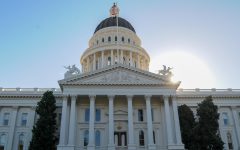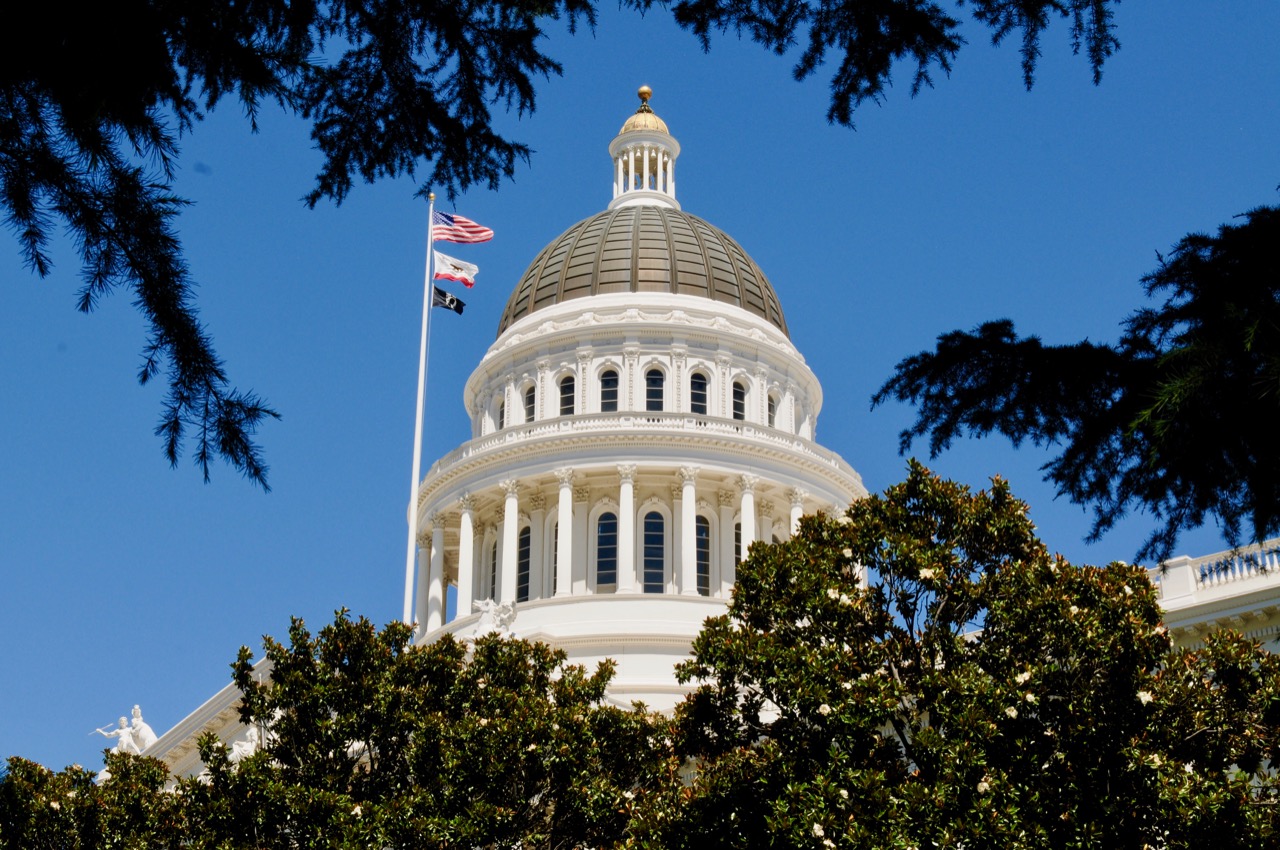
Voter at polls during presidential election, using paper ballots. (Photo: Rob Crandall/Shutterstock)
California Elections Attorney/Official Says Be Patient – May Be Millions of Votes Left to Count
‘California does mail-in voting well’
By Katy Grimes, June 8, 2022 3:15 pm
The 2020 General Election was the first all-mail-in-ballot election under California Gov. Gavin Newsom’s then-executive order, now a law. Since then, many voters still are not sure about the process. And after Tuesday’s California Primary Election, many voters have reservations.
The Globe spoke with Audrey Martin, an Elections attorney and Elections official for the Republican National Lawyers Association who works on election integrity, as well as with many county registrars.
Martin says California does mail-in voting well.
I told her that right before the 2020 General election I visited the Sacramento County’s Voter Registraton and Election office to learn what happens after a mail-in ballot is dropped off.
What I witnessed was a sophisticated production process replete with checks and double checks.
Martin agreed. She said she doesn’t necessarily agree with all of California’s voting laws, but most county registrars “are very well run.”
Martin said not all county voter registrars have the same computerized capabilities as Sacramento, so when some counties were sharing early totals on Election night, others still had bags of ballots stacked throughout their offices which had not yet been processed and counted.
“Theoretically there could be a lot of ballots to process – it’s usually a big number,” Martin said. Maybe millions? She said with so many people waiting to drop off their ballot, or mailing it on Tuesday, “it takes much more time by registrars on the back end.”
And this happens “because it is so easy to vote in California,” Martin said. There are many options, which also means people don’t always know the way to vote, particularly those who always voted on Election Day in person. The voting-by-mail for them just isn’t clear. For many, they are worried that their mailed ballot doesn’t get to the registrar, so they show up in person on Election Day to cast their vote. Martin said this takes county registrars so much extra time because they have to check the voter logs against the mailed ballots.
In the Sacramento County’s Voter Registraton and Election office, ballots collected from the more than 170 official collection boxes around the county are sorted by precinct. Those ballots go next to employees operating the machines that slice open the return envelope, and a poof of air allows the operator to lift the ballot out, while a second operator separates but saves the envelope, which are used later for audits.
The ballots are scanned into the computer system, and voter signatures on the envelope are matched to the voter’s signature in the county elections system. If the operator feels the signatures don’t match, the voter is mailed a new signature page, which they fill out and send back.
Deep inside of the elections offices is a production center which resembles the production process in a printing plant bindery. Operators feed ballot return envelopes in stacks into a large machine which scans them, and separates by batches and precincts. Other operators act as auditors along the way. And there are phone banks of employees taking calls about the process.
There are employees in teams of two who analyze the actual ballot for any votes “X’d” out as a mistake, looking for voter intent. If they cannot make out the voter intent, it is left blank.
All of these operations are monitored by “Big Brother” – cameras in every room, from several angles.
With so many outstanding ballots, and 36 days to count them, expect some of the races to tighten up, or other candidates to pull away with bigger leads.
The Globe reported Tuesday afternoon that voter turnout for the 2022 California primaries remained low with many polling places and buildings with vote drop-offs reporting fewer people coming in than previous elections. But that can change with many ballots mailed on Election Day, as well as voters showing up to vote in person.
Martin’s information, experience and reassurances of the processes should assuage the concerns of California voters.
Now it is time to hurry up and wait.





Check Noisome’s basement!
who cares? Does anyone really think this is actually an election, rather than a “selection”?
This is complete horse excrement… if we returned to a precinct-based/local voting system where my ballot is SCANNED RIGHT IN FRONT OF ME AFTER I HAD PRESENTED PROOF OF IDENTIFY, I would know immediately that my ballot has been processed and has not been kicked out for “adjudication” or considered an “undervote” where they “determine voter intent”…
Of course, if the tabulation software has been jimmied so that each Republican vote is counted as .5 of a vote and each Democrat vote is counted as 1.5 votes, we’d end up with distorted Democrat results like we have last night….
See my other post about the security weaknesses found by SLI (an outside consultant firm hired to test Demonion Voting Systems by corrupt former SOS Alex Padilla, focusing on this pearl of concern :
The ICE* machine includes a design characteristic that merits some attention. Any
machine that includes ballot marking and deposit into the ballot box in the same paper
path, is not software independent, and could be compromised in a way that is
undetectable with a manual tally or risk limiting audit. The ballot-marking printer is in the
same paper path as the mechanism to deposit marked ballots into an attached ballot
box. This opens up a security vulnerability: the voting machine can mark the paper
ballot (to add votes or spoil already-cast votes) after the last time the voter sees the
paper, and then deposit that marked ballot into the ballot box without the possibility of
detection. Vote-stealing software could easily be constructed that looks for undervotes
on the ballot, and marks those unvoted spaces for the candidate of the hacker’s choice.
This is very straightforward to do on optical-scan bubble ballots (as on the Dominion
ICE) where undervotes are indicated by no mark at all. The autocast configuration
setting that allows the voter to indicate, “don’t eject the ballot for my review, just print it
and cast it without me looking at it.” If fraudulent software were installed, it could change
all the votes of any voter who selected this option, because the voting machine software
would know in advance of printing that the voter had waived the opportunity to inspect
the printed ballot. This would be mitigated by using the ICE for accessible sessions
only. Additionally, the ICE should include procedural controls whereby a technician
completes the L&A procedures prior to an election, and then a second technician goes
through the validation procedure to validate the firmware and software on the ICE, and
then applies the seals to the machine. Any ICE that is presented at a polling place with
broken seals should be replaced.”
*ICE is an all-in-one precinct optical scan tabulator and ballot marking device. The ICE
can accept pre-marked ballots, give voters a second-chance notification on ballot errors,
and provide a final ballot review based on the machines interpretation of the handmarked ballot. The software prevents the scanning and tabulating of a vote with a
marginal mark based on thresholds set in EED*.
*EED – “EMS-Election Event Designer (EED), v. 5.10.11.24
EED is an application that handles the majority of the pre-voting activities. EED is
the application that receives the imported data from EDT and Audio Studio in
order to generate ballot structure, ballot artwork, and tabulator files, including all
the audio for an accessible voting session on the precinct tabulators.”
As Josef Stalin so famously said : “Those who vote decide nothing. Those who count the vote decide everything.”
I have worked in the standardized testing industry (CTB Mcgraw-Hill) which uses much of the same counting, tabulating and reporting technology as Dominion and other voting systems. IMO the process CAN be valid and reliable. Mistakes and abuse can also happen. Quality control at EVERY level is a requirement – not an option. How consistent is the quality control across all aspects of the voting systems including the programming? The consumers of educational testing (school districts and parents) require test-score accuracy for obvious reasons. Otherwise, the system is not trustworthy and the results are useless for all intents and purposes.
P.S. Here is an example of what I mean by “quality control”. In order for a student to take the exam at the testing site, they MUST show proper ID.
California’s elections are ‘anything but honest and secure’ . ‘Rigged’, Zuck Bucks video, ‘2000 Mules’ Dinesh D’Souza video, Voting machines have WiFi access (after certification), as well as other manipulation capabilities, minimum 26 ballot harvesting centers in CA. Keep your eye on True the Vote Gregg Phillips… This scandal is massive! …Bravo Raymond, the simplest and surest way to secure honest participation… photo ID.
Audrey Martin, an Elections attorney and Elections official for the Republican National Lawyers Association who works on election integrity, as well as with many county registrars, claims that California does mail-in voting well? Is she completely delusional? California Democrats and their RINO cronies use mail-in balloting to steal elections. It’s one of their main tools used to steal elections along with ballot harvesting, rigged voting machines, etc. Many of us haven’t trusted California’s elections for years for good reasons.